
Students will create a story based on an image.
- Subject:
- Arts and Humanities
- Education
- Language Education (ESL)
- Material Type:
- Diagram/Illustration
- Lesson Plan
- Provider:
- J. Paul Getty Museum
- Provider Set:
- Getty Education
- Date Added:
- 05/27/2013

Students will create a story based on an image.
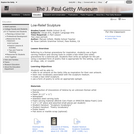
Referring to a Roman gravestone for inspiration, students use a foam carving medium and carving tools to create a bas-relief (low-relief) gravestone for a beloved pet. Students then write an epitaph for the pet using a standard form of poetry that is appropriate for the setting, such as an elegy, ode, or couplet.
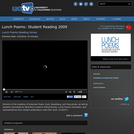
Winners of the Academy of American Poets, Cook, Rosenberg, and Yang prizes, as well as students nominated by BerkeleyŐs creative writing faculty, Lunch Poems volunteers, and representatives from student publications read their work. ( minutes)
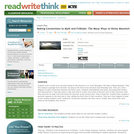
Following the model of N. Scott Momaday's The Way To Rainy Mountain, students write three-voice narratives based on Kiowa folktales, an interview with an Elder, and personal connections to theme.
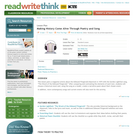
Students compare the sinking of the Edmund Fitzgerald with the song, "The Wreck of the Edmund Fitzgerald," then create their own poetry about a historical event.
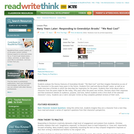
Students analyze the Gwendolyn Brooks poem "We Real Cool" and then write about how the character's pool hall days might influence who the character becomes fifty years in the future.
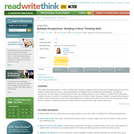
Students use critical literacy skills to understand the concept of perspective and to then create a diary for an animal they research with a partner.
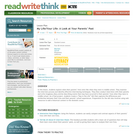
Past and present come together when students interview their parents and create a skit that compares their parents' experiences as middle schoolers with the students own lives.
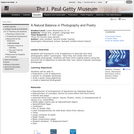
Students will brainstorm a list of adjectives to describe two early photographs called "cyanotypes." Next they will create their own cyanotype photograph. Students will then write original poetry using the previous list of adjectives to describe their own nature-inspired cyanotype photograph.
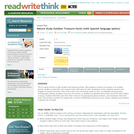
Students take a walk on the wild side when they research an animal and create a scavenger hunt activity for their classmates.
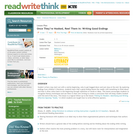
It's important to "hook" readers at a story's beginning, but it's equally important to keep them interested. In this lesson, students learn to write effective conclusions to their own stories.
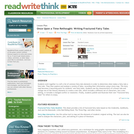
Students read and analyze fairy tales, identifying their common elements. They then write their own "fractured" fairy tales by changing one of the literary elements found in the original.
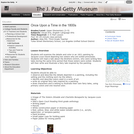
Students will examine the details and color in an 1821 painting by Jacques-Louis David depicting two sisters who are exiled princesses. Students will read a tale about the Brothers Grimm, who were writing fairy tales during the same time period that these sisters were exiled. Students will then write and illustrate a fairy tale inspired by the painting.
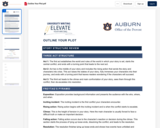
This worksheet reviews two types of story structure: the Three Act Structure and Freytag’s Pyramid. Space is provided to help you map your story out in both structures to decide which best fits your writing style.
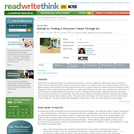
This activity, inspired by the paintings of Edward Hopper and the stories of Raymond Carver, challenges students to get inside contemporary life and characters through the creation of monologues.
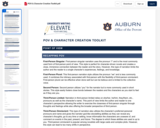
This worksheet discusses five points of view found in creative writing, notes tips for helping writers select a point of view, provides resources for writing and reading for diversity, lists questions to consider for character creation, and provides fillable character profiles.
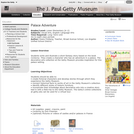
Students write and illustrate a short fantasy story based on the book "Corduroy".They create a character who has an adventure in a palace. The decorative arts collection at the Getty Museum provides inspiration for this palace setting.
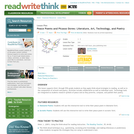
Students apply think-aloud strategies to reading and to composition of artwork and poetry. They research symbols of peace as they prewrite, compose, and publish their poetry.
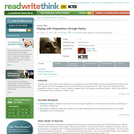
Students play with and explore prepositions during a whole group reading of Ruth Heller's Behind the Mask, and then by composing and publishing prepositional poems based on the book's style.
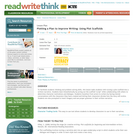
Students really get into character in this lesson as they act out the parts of a script and analyze character motivations and dialogue.